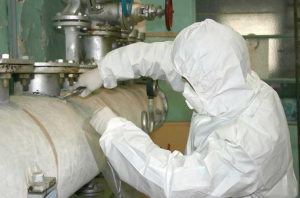Lower Your Risk When Giving Breaths: Infection Prevention Essentials

One effective way to lower your risk for infection when giving breaths is by implementing proper hygiene practices. Wash your hands thoroughly before and after providing assistance. Ensure that all equipment is clean and sanitized before use. By following these simple steps, you can help protect yourself and others from potential infections. Remember, practicing good hygiene is key in reducing the risk of transmission.
How Can You Lower Your Risk for Infection When Giving Breaths
Welcome to our blog post where we’ll be discussing important ways to stay safe and lower your risk for infection when giving breaths. Whether you’re providing first aid or CPR, it’s crucial to protect yourself while helping others. Let’s explore some simple yet effective strategies to minimize the chances of getting sick.
The Importance of Infection Control
Before we dive into specific tips, let’s understand why infection control is essential. When you give breaths to someone who is in need, you are in close contact with their respiratory system. This proximity increases the risk of exposure to infectious agents such as bacteria and viruses. By following proper infection control measures, you can safeguard your health and the well-being of the person you are assisting.
Washing Your Hands Thoroughly
One of the most basic yet critical steps in preventing the spread of infections is proper hand hygiene. Before giving breaths to someone, make sure to wash your hands with soap and water for at least 20 seconds. This simple practice can help eliminate harmful germs that may be present on your hands.
Using Hand Sanitizer
If soap and water are not readily available, using an alcohol-based hand sanitizer can be an effective alternative. Look for a hand sanitizer that contains at least 60% alcohol and rub it thoroughly over your hands until they are dry. This can help kill germs and reduce the risk of contamination during respiratory assistance.
Wearing Personal Protective Equipment (PPE)
When giving breaths, especially in emergency situations, wearing personal protective equipment (PPE) can provide an additional layer of defense against infections. PPE such as gloves, masks, and eye protection can help minimize direct contact with bodily fluids and respiratory droplets that may contain harmful pathogens.
Choosing the Right Mask
If you are performing mouth-to-mouth resuscitation, using a barrier device like a CPR face shield or mask is crucial. These devices act as a physical barrier between you and the person you are assisting, reducing the risk of exposure to saliva, blood, or other potentially infectious materials.
Practicing Proper Respiratory Hygiene
Another important aspect of infection control when giving breaths is practicing good respiratory hygiene. Encouraging the person receiving assistance to cover their mouth and nose with a tissue or cloth can help contain respiratory droplets and prevent the spread of germs.
Ensuring Adequate Ventilation
If possible, try to provide respiratory assistance in a well-ventilated area to reduce the concentration of airborne pathogens. Opening windows or using fans can help improve air circulation and lower the risk of inhaling infectious particles.
Regularly Disinfecting Equipment
Whether you are using medical equipment or everyday items during respiratory assistance, it is crucial to clean and disinfect them regularly. Disinfecting surfaces that come into contact with bodily fluids or respiratory secretions can help prevent the transmission of infections between individuals.
Using EPA-Approved Disinfectants
When cleaning equipment, make sure to use disinfectants that are approved by the Environmental Protection Agency (EPA). These products are specifically formulated to kill a wide range of pathogens, including bacteria and viruses, ensuring thorough sanitation.
Seeking Training and Guidance
Lastly, to further lower your risk for infection when giving breaths, consider seeking proper training and guidance in first aid and CPR. Learning from certified instructors can equip you with the knowledge and skills needed to respond effectively to emergencies while minimizing the risk of exposure to infectious agents.
Stay Informed and Updated
Stay informed about the latest guidelines and recommendations related to infection control during respiratory assistance. Health organizations and authorities regularly update their protocols based on emerging infectious diseases and new research, so staying abreast of developments can help you adopt best practices.
With these strategies in mind, you can play a vital role in providing assistance to those in need while safeguarding your own health. Remember, prevention is key when it comes to reducing the risk of infections, so prioritize safety and hygiene whenever you are giving breaths.
COPD stages explained #copd #lungdisease #pulmonaryrehabilitation
Frequently Asked Questions
How can I lower my risk for infection when giving breaths?
To lower your risk for infection when giving breaths, make sure to use a barrier device such as a face mask or pocket mask. This creates a protective barrier between you and the person you are assisting, reducing the chances of direct contact and the spread of germs.
What other precautions can I take to minimize the risk of infection during rescue breathing?
In addition to using a barrier device, ensure proper hand hygiene by washing your hands before and after giving rescue breaths. Avoid touching your face during the process and consider using gloves for an extra layer of protection.
Are there specific techniques I should follow to prevent infections while administering rescue breaths?
When giving rescue breaths, maintain a safe distance from the person’s nose and mouth to reduce exposure to respiratory droplets. Position the person’s head in a way that opens the airway without compromising your safety.
Final Thoughts
In conclusion, practicing proper infection prevention techniques is essential when giving breaths. Wash hands regularly, wear personal protective equipment, such as gloves and a mask, and ensure proper training and education on infection control measures. These steps can significantly lower your risk for infection when giving breaths. Remember, taking these precautions not only protects yourself but also those around you. Stay safe and prioritize safety in all caregiving situations.







